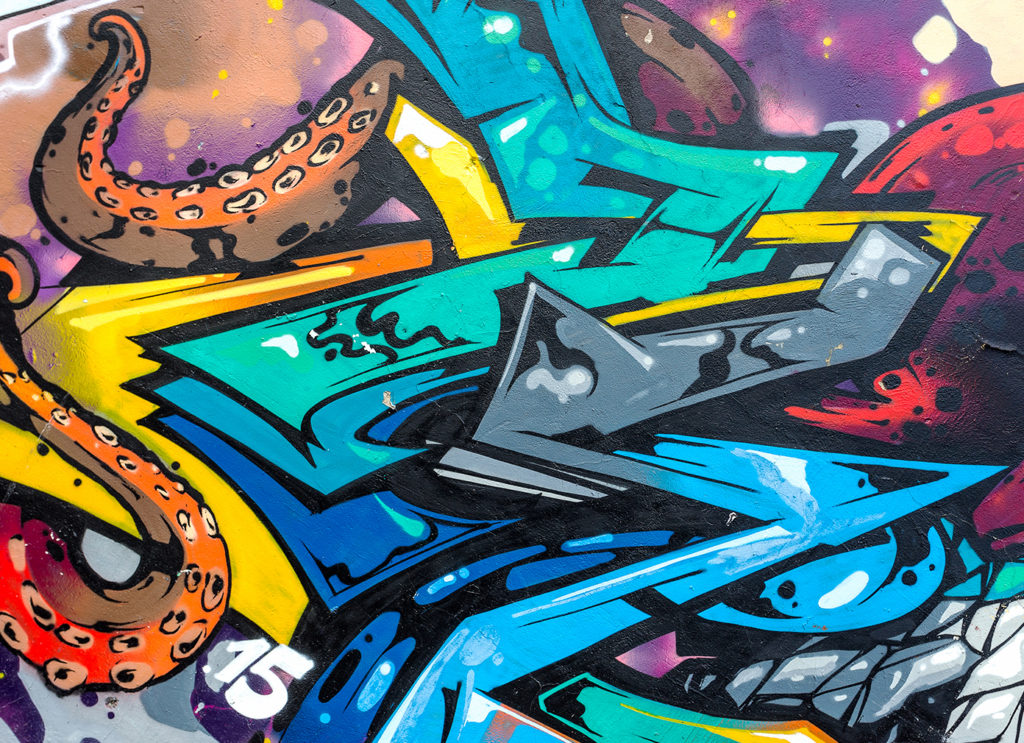
One of our Group Leaders, Meg S., created a street art lesson plan to help your students learn more about street art from around the world. Meg is a middle school art teacher from South Carolina who has been on seven EF tours.
During these times of social distancing, we need positive messages. We are all staying home and away from others, looking forward to seeing our family and friends again. But if you look around your neighborhood or town, you’ll see beacons of hope and signs of solidarity. People all over the world are creating messages and art for neighbors. Windows, doors, and sidewalks offer positive words and cheerful images. Each of these spreads the message that we are all in this together.
These are all little examples of public art. Street art is created to tell a story, promote an idea, illustrate a culture, make the viewer think, or create an experience.
Grade Level: Middle or High School
Subject areas: Visual arts/Media arts
Objective: Take a virtual street art tour and design a piece of street art for your community
Essential Question: How can art communicate and connect a community?
Overview: This unit contains three lessons that could be presented together or independently. Before you start, check out this video about street art in Bristol, England (the home of Banksy). Once you’re done, select which lesson(s) to share with your class.
- Create a virtual street art journal
- Design street art for your community
- Compare and contrast two street artists
Lesson 1: Take a virtual tour | Create a travel journal
Travel virtually to explore street art in countries you’ve visited or would like to visit. Here are some links to get you started, but feel free to continue exploring on your own:
As you explore, create a visual travel journal using a traditional or digital sketchbook. As you explore, include the following:
- Sketches of the subjects within murals. What is included? Figures? Words? Objects?
- Notes about the area where the murals appear. Is it an urban area, industrial, commercial, or residential? Is the mural large or small? What are the street addresses? (Maybe you’ll have an opportunity to see it in person one day!)
- Objects, symbols, and colors included in the work that feel important to the message.
- A description of the work. What is the subject? What does it tell us about the artist, issue, or community?
- Thoughts about the mural’s story, meaning, and purpose.
- Public benefits from pieces of street art.
Travel helps us learn about other cultures, places, and people. We can apply what we learn to make our own communities better. Think about the things you learned from your virtual journey. What connections can you make to your city or town?
Lesson 2: Design street art
In this lesson, you’ll design your own piece of street art. Start by considering what you know about your community.
- What is important in your town or city?
- What is a positive message you could share?
- How can you represent what is best about where you live?
- What can you borrow from other street art you’ve seen?
The subject: What is your message? How can you communicate a positive message to the public? What images, symbols, words, and colors would you use so people can understand your intention? Create sketches to determine your design.
The site: Where would your mural appear? What area of your community would be an ideal site for street art? Is the location a public or privately owned building? Who would grant permission for your design?
The creation: Who would create the mural(s)? Who would benefit?
Your design: Take a screenshot of your selected site from Google Maps. Create your design on the photograph using digital tools, or print the image and use traditional drawing materials. Write an artistic statement, explaining your choice of location and the message you’re trying to convey. Make it meaningful. Make it fun!
Lesson 3: Two street artists
Banksy grew up in Bristol, England. Shepard Fairey grew up in Charleston, SC. Both artists have traveled and created work in other countries. Banksy’s identity is unknown. Anonymity is critical to this artist (or is it artists???). Shepard Fairey conducts interviews, accepts commissions, and sells his work online. To see their work in the wild, check out Banksy in the U.S., and Fairey in England.
In order to generate more street art project ideas, let’s first learn more about both artists. Start off with Banksy by visiting his website or watching these videos about his work:
- Banksy painting shreds after-sale
- Behind the Banksy
- Is this Banksy? ITV uncovers lost footage of the graffiti artist
To learn more about Shepard Fairey, visit his website, view his Artnet page, or watch this interview with him.
Let’s reflect: How does the way each of these artists work impact their message? What do they have in common? How do they differ?
Check out this piece to learn more about street art around the world!
–
Editor’s note (2021): This piece has been updated for clarity, accuracy, and relevance.
Related articles
